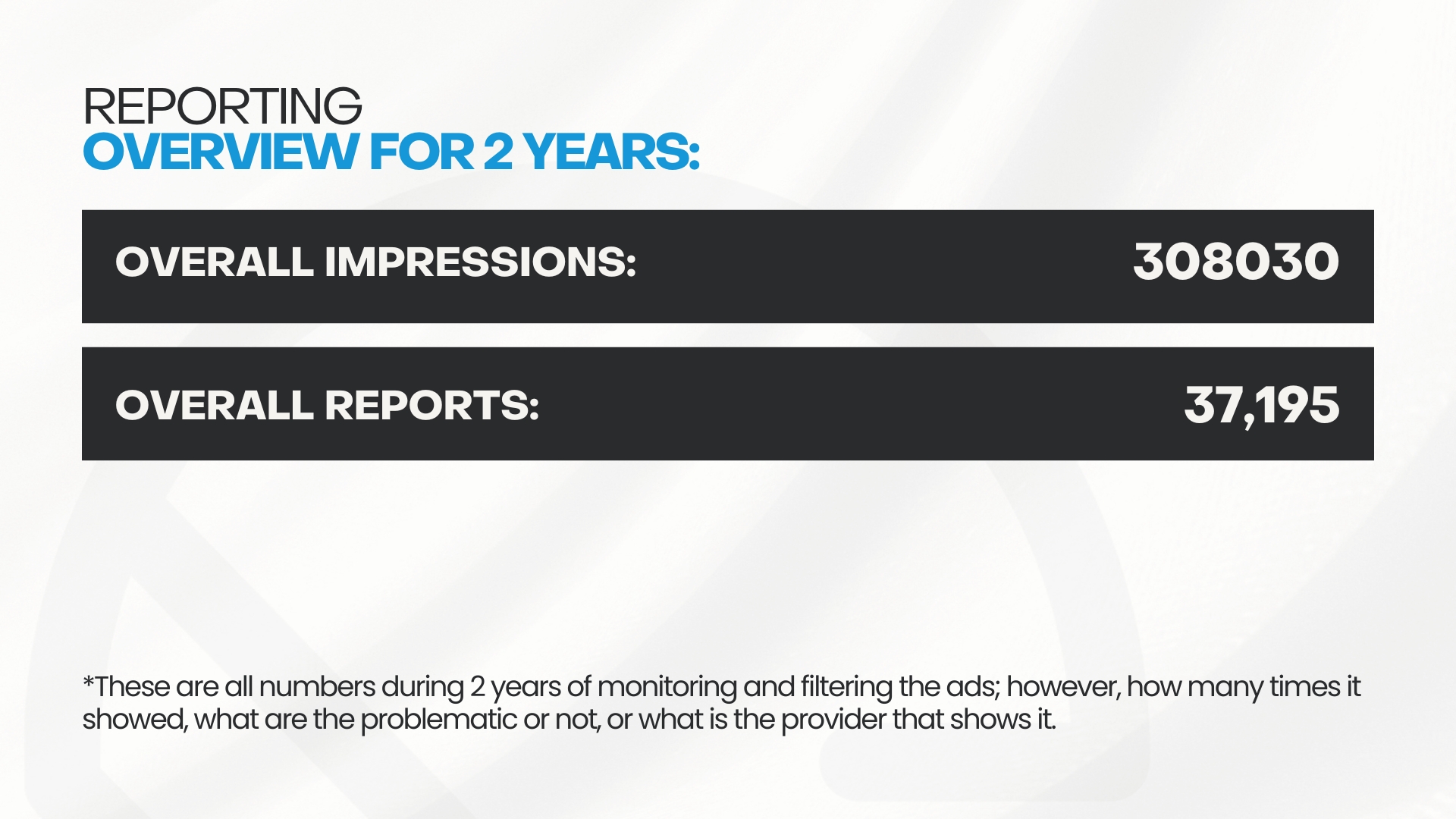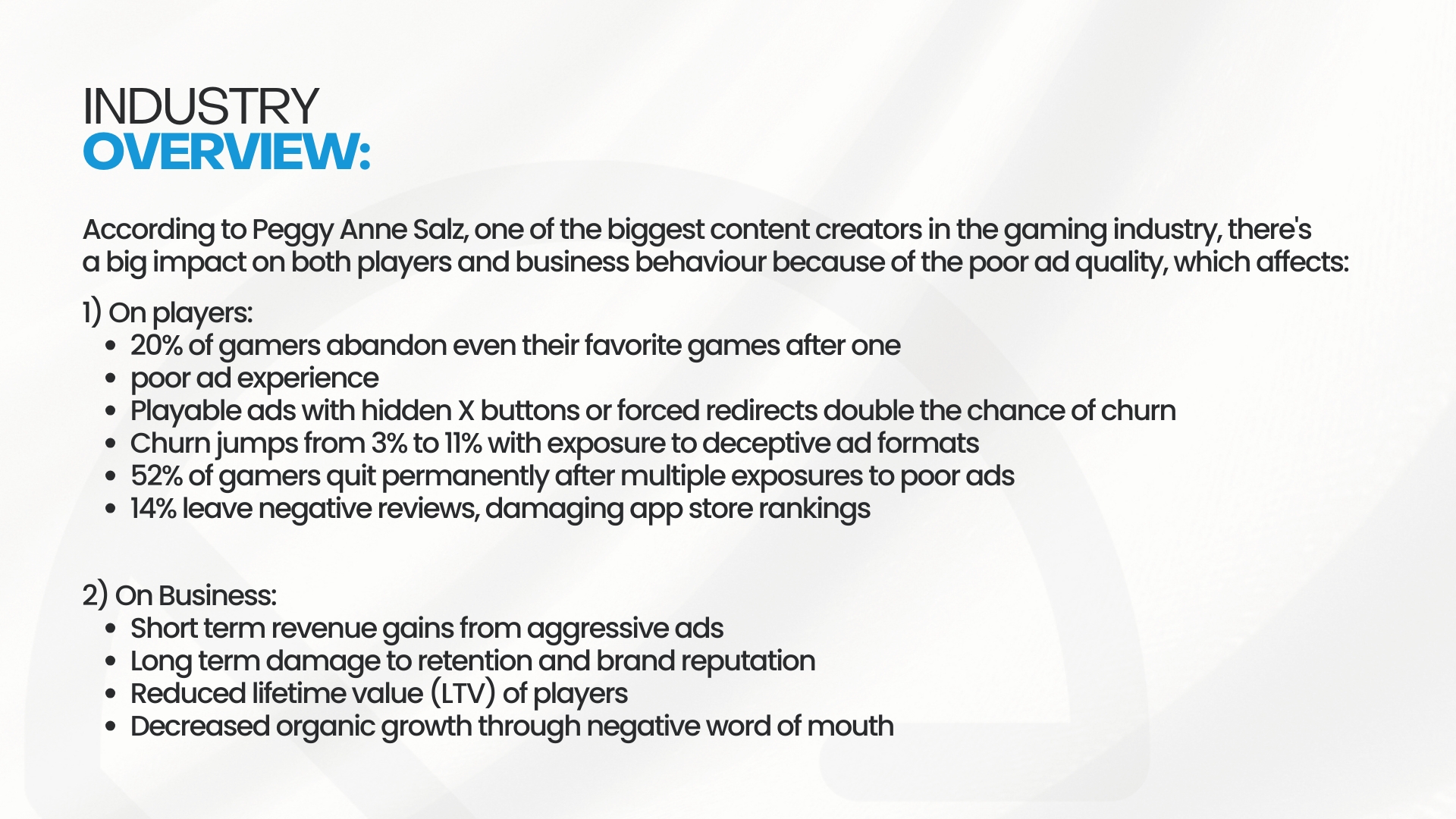The Ad Crisis Nobody Admits Exists - And How It’s Quietly Killing Game Growth

Mobile ads are the financial backbone of the free to play model. But hidden beneath the revenue graphs lies a silent leak: players aren’t leaving because the gameplay failed, they’re leaving because of what happens between it.
You’ve seen it before: retention looks fine, UA spend feels justified, performance metrics hold steady, yet something feels off. Growth slows, engagement dips, store reviews turn negative.
Look closer. The complaints aren’t about your level design or updates, it’s about the ads: “This game is full of scams”, “Ads crash constantly”, “Can’t even play without being tricked.” Feedback like that spreads fast. And with it comes ad erosion - the gradual loss of trust that no UA campaign can fix. The core issue here is trust, which is now the most valuable, and most fragile, currency in mobile gaming.
For players, there’s no difference between “the ad” and “the game” - it’s one continuous experience. When a creative misleads, when a reward ad exceeds two minutes, when a fake “X” trick them into a click, or when a pop-up blocks the close button, it creates microscopic friction - tiny frustrations that add up to churn.
See it the way your players do: if it frustrates you, it frustrates them. They don’t blame mediation or networks. They blame the game. And once trust breaks, rebuilding it is almost impossible.
The irony is that most studios spend heavily on gameplay integrity, polishing visuals, balancing mechanics, running QA passes, but the player’s ad experience often slips through untouched. That’s where the silent churn begins.
The problem automation can’t solve
Ad tech is smarter than ever. Bidding, mediation, and optimization are automated, but machines don’t feel frustration. They can’t sense when an ad crosses the line between persuasive and deceptive. Automation can optimize metrics, but it can’t measure irritation. Every broken impression adds to your experience debt, the cost paid later in lost trust, bad reviews, and uninstalls.
Worse, some ad creatives now bypass filters using tactics to sneak past platform detection. It may look clever, but when these ads appear inside family-friendly games, the damage is instant: uninstalls, bad reviews, and broken trust.
These are human problems and the damage is human too: lost players, negative reviews, eroded trust.
Also, for many publishers, ads are treated as an external system managed by networks. But ads live inside your game. They shape the player journey whether you plan for it or not. Yet few teams know what creatives players actually see. If the industry’s mission is to protect user experience, that blind spot is no longer acceptable. Monetization fails when players stop trusting the product that delivers it.
308,030 ads, 37,195 red flags: A case study in bad ads
Over the past two years, we have monitored a total of approximately 308,030 ads for one of our partners. During this period, we identified around 37,195 reports that did not comply with their regulations. In this case study, we will focus on a shorter time frame to provide a detailed analysis of the results.

You can download the full case study here.
A shift toward accountability
Across the industry, there’s a growing recognition that ad quality needs to be treated with the same seriousness as gameplay QA. Studios are starting to take back control, auditing creatives, tracking player sentiment, and demanding transparency from partners. That shift is not just operational, it’s about recognizing that ad trust is player trust.
This is where moderation and visibility come in. The goal isn’t to eliminate ads, it’s to make them work for the player, not against them. Studios that review, test, and document their ad
experiences consistently see stronger retention, fewer complaints, and better monetization stability. It’s a small effort that pays for itself many times over. And that’s where companies like SNAP Moderation have quietly become partners in change, not by selling another tool, but by helping studios see their ad environments through a player’s eyes. We see the same ads your users do, full duration, no shortcuts, and flag what frustrates them before it damages trust.
The idea isn’t to add another system. It’s to create a standard where bad ads are the exception, not the expectation.
The following context shows a brief overview of the effect of bad types of ads in the last period:

The future depends on trust
In the previous case study, we showed that over 9 months we found nearly 17,500 reported ad issues, over 16% of players, all of which were made in a small timeframe.
After integrating SNAP’s human powered monitoring, the frequency of these ads dropped significantly, leading to measurable improvements in player retention and app store feedback.
This proves that vigilant ad quality protection can turn the misleading into confidence and a safeguard for both players and revenue.
Visit our website to learn more: www.snapmoderation.com
For inquiries: info@snapmoderation.com











